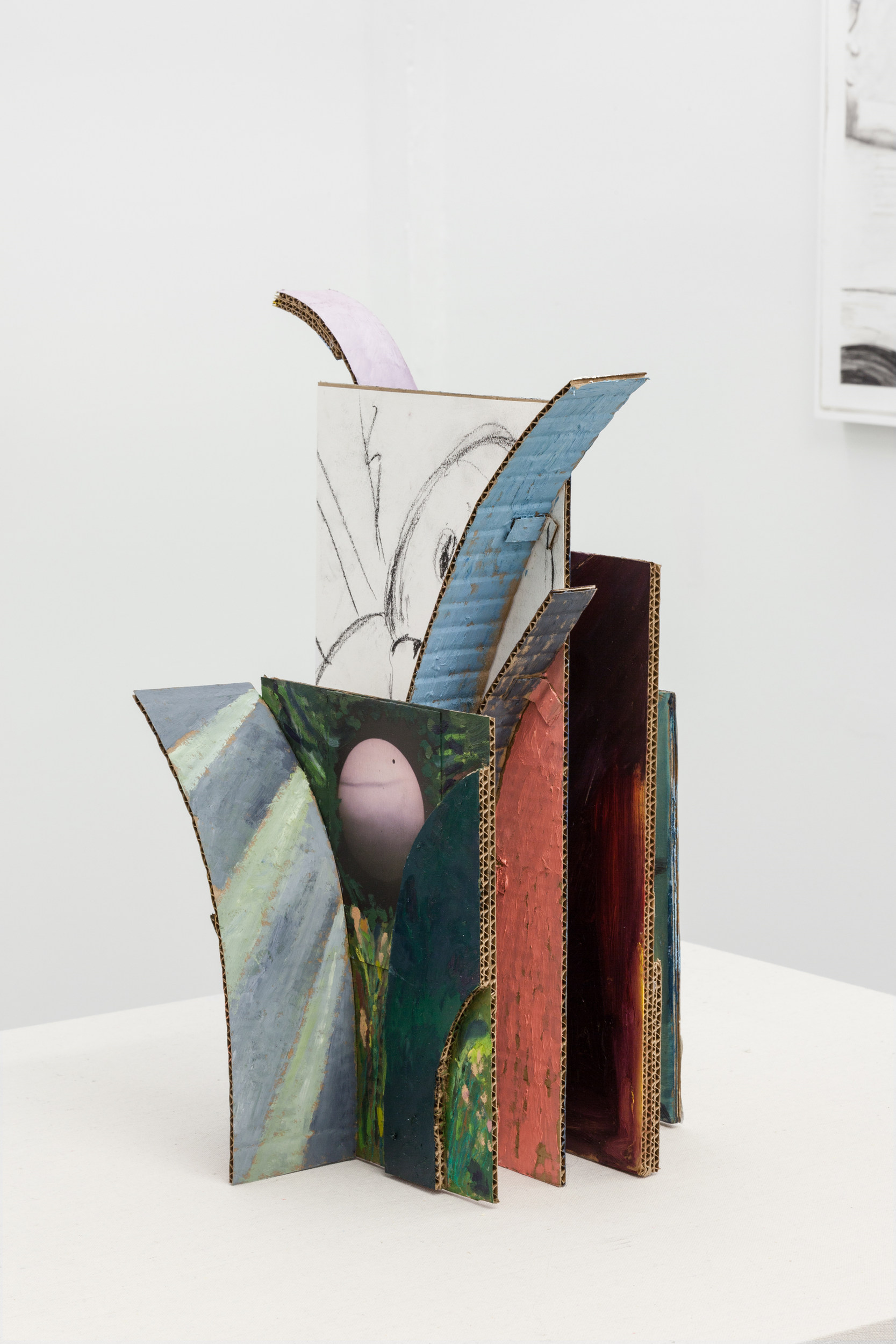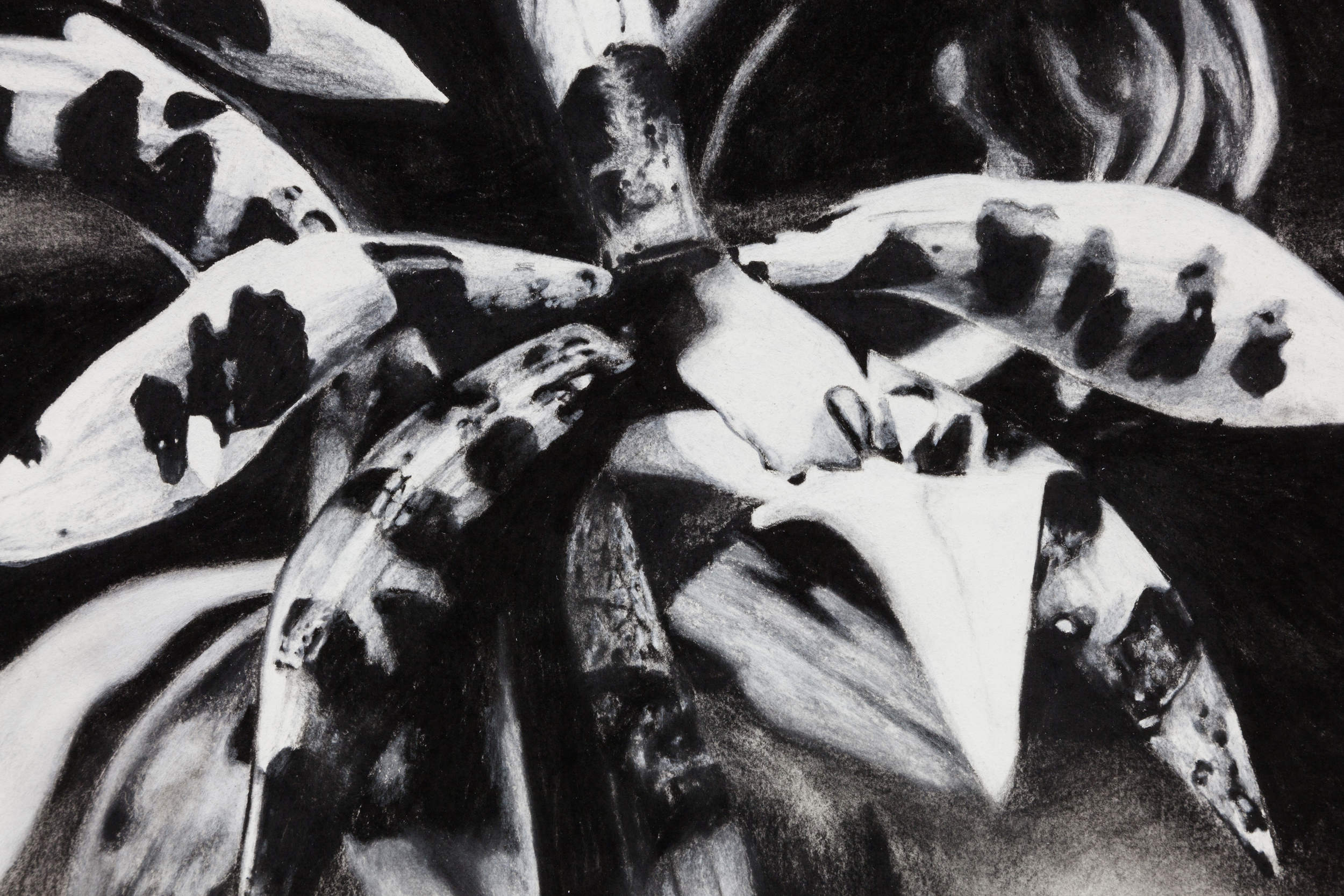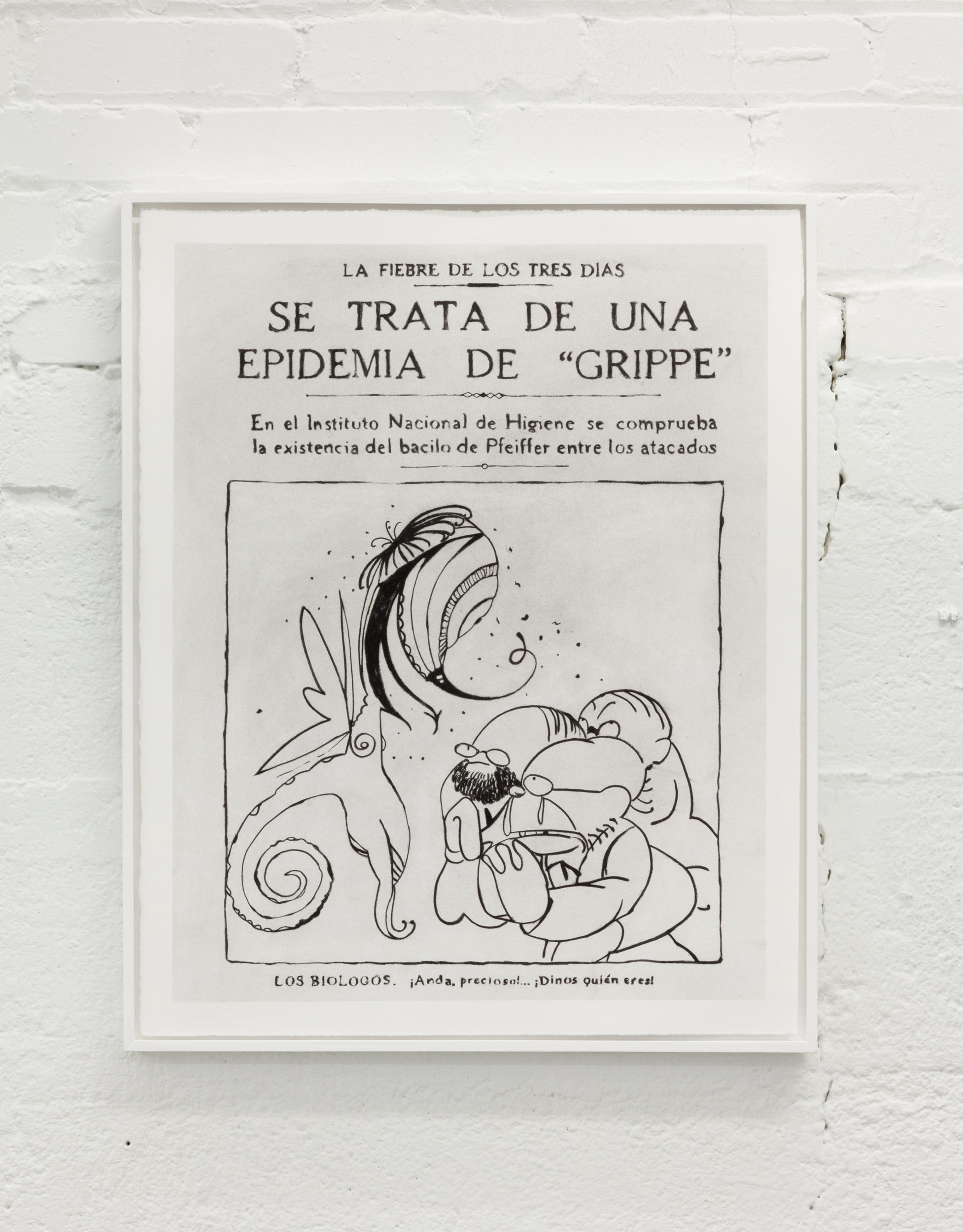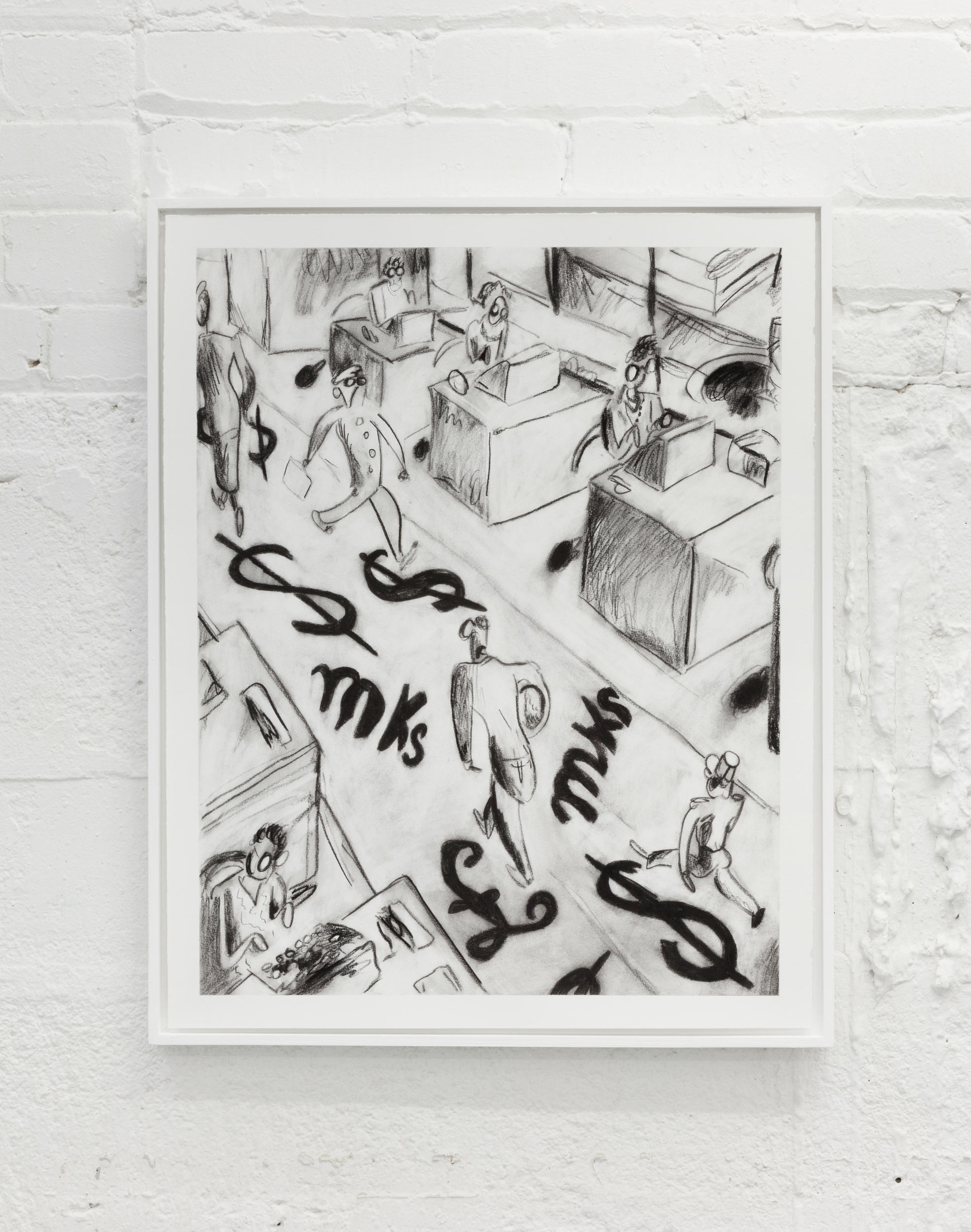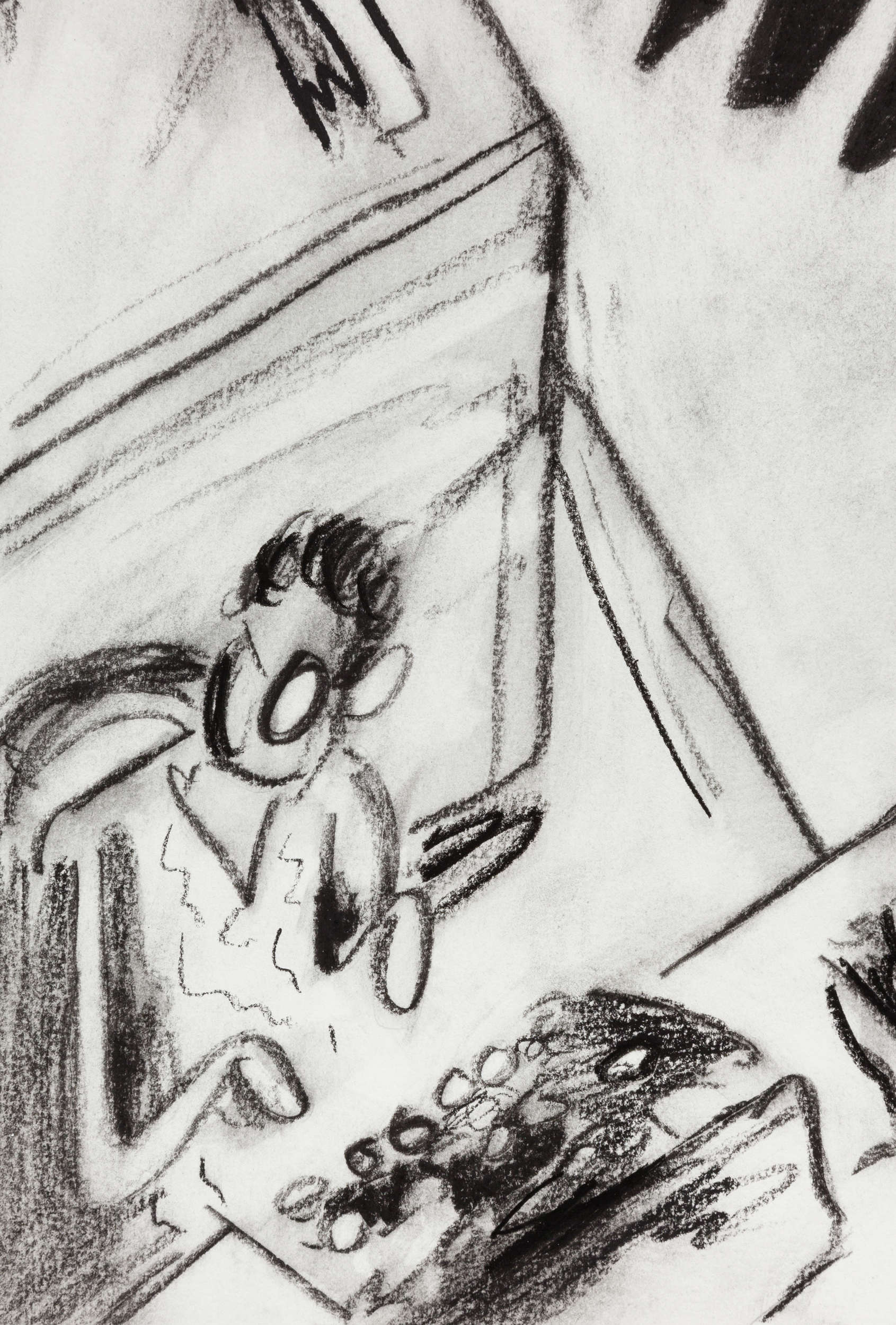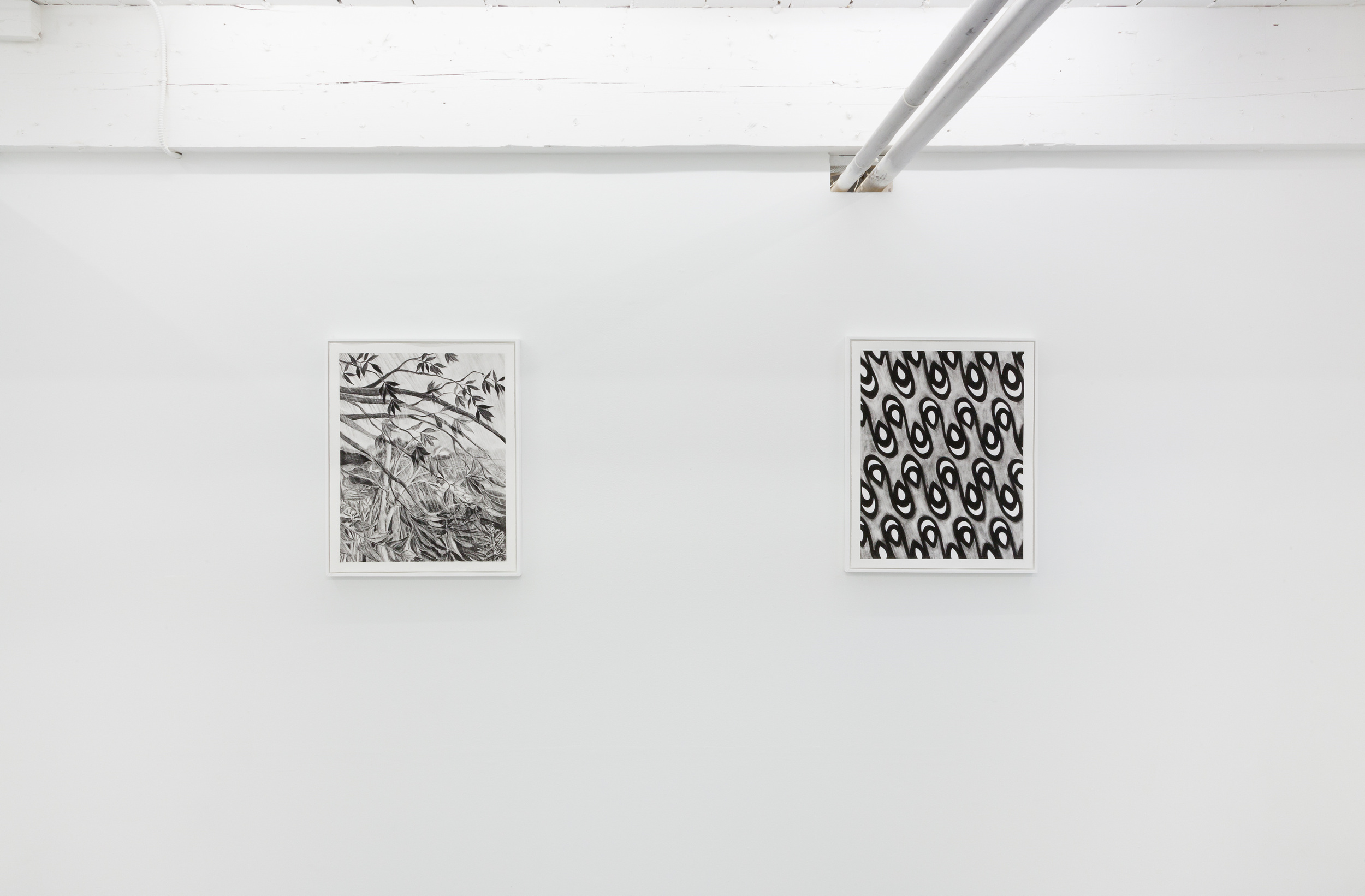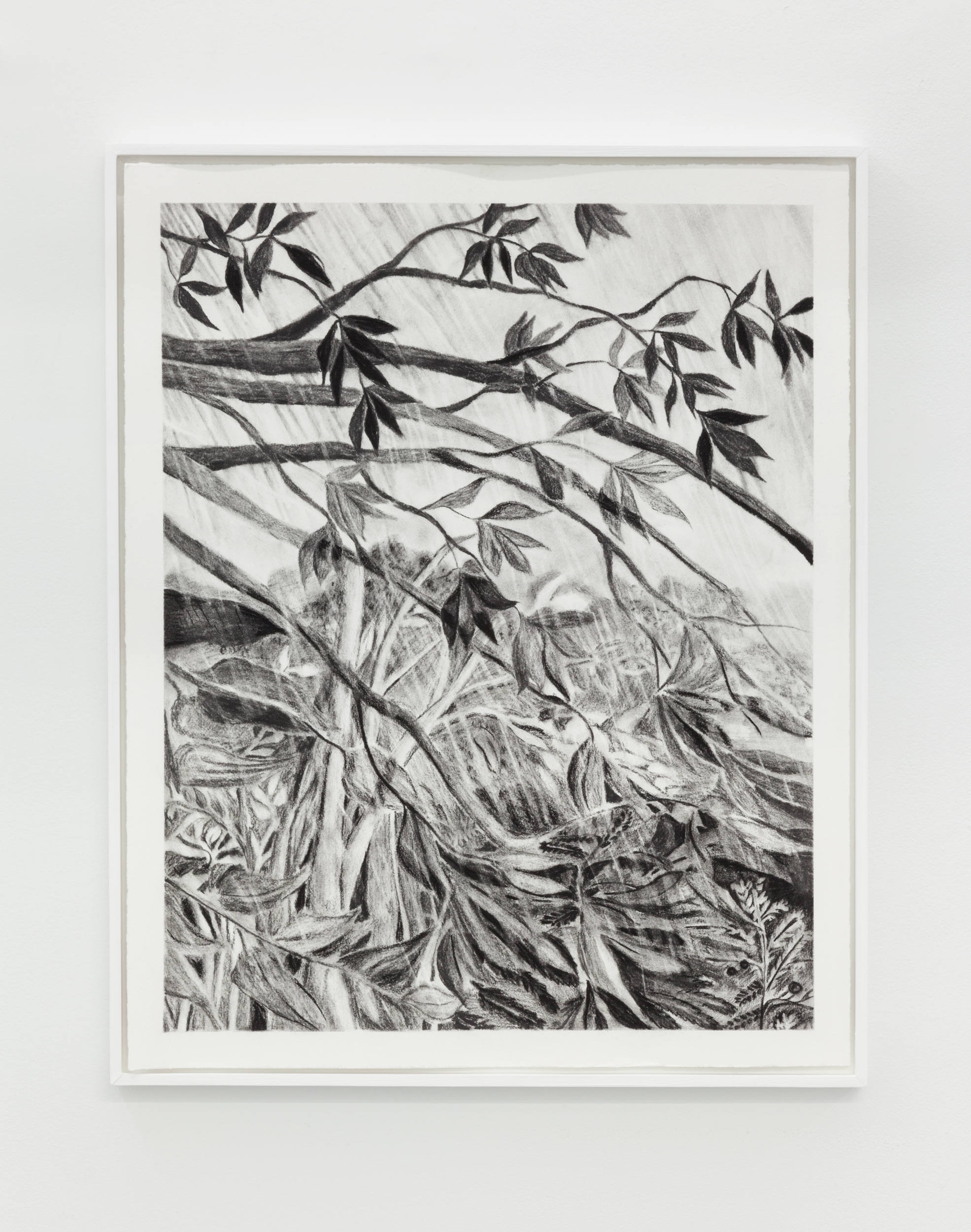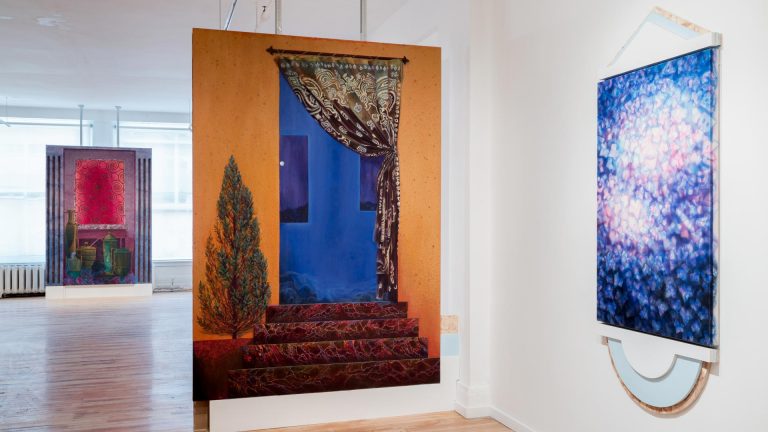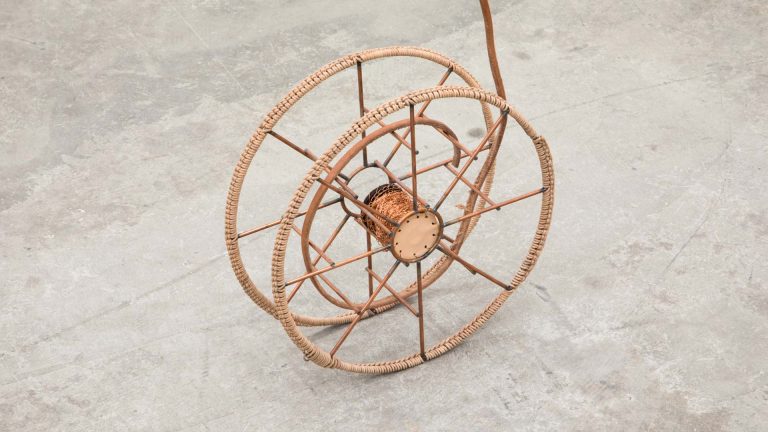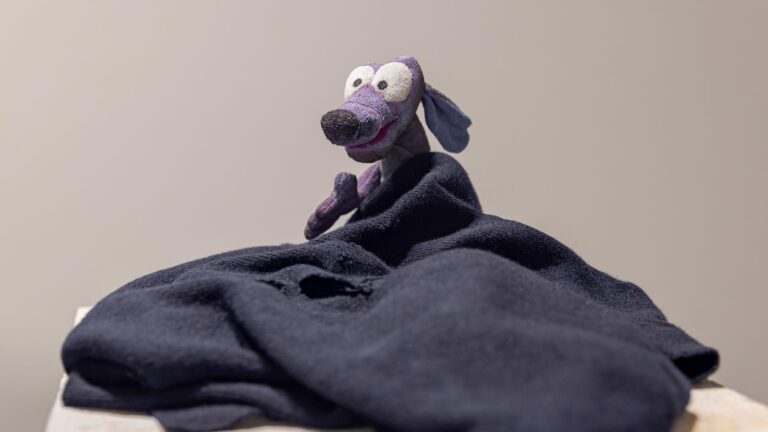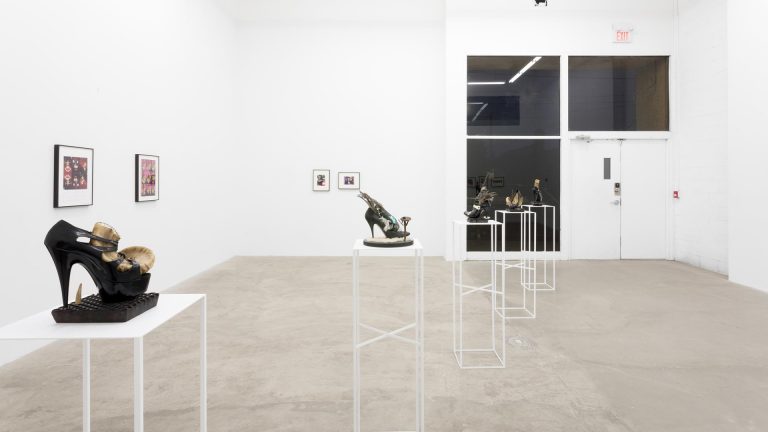Artist: Tristan Unrau
Exhibition title: For Example
Venue: Towards, Toronto, Canada
Date: June 1 – 23, 2018
Photography: all images copyright and courtesy of the artist and Towards, Toronto
1.Strip them down to their essential parts. Stories distilled to pictures, excised from their context. Divest them of their colour — leave tone on a surface, lines on a page.
Yet still, sensuous comes to mind. Those abysmal blacks and undulating greys. Such nakedness can’t help but elicit a kind of want and suggest a sort of pleasure.
The word sensuous, when it first appeared in John Milton’s Paradise Lost, attempted to avoid the sexual connotations of the sensual; but the association persists.
Are these drawings also an effort at evasion? From references unknown, each image insinuates but does not reveal its history. It could be called an act of unification. Or appropriation. Mimicry too, adaptive and assimilatory.
It leaves me suspecting that behind the gesture, an image, or this drawing, is a vortex of meaning I have missed – a nonsensuous withholding.
2.There is a picture of an orchid, perhaps leopard, if there is such a thing. Who could possibly know them all by name. There are over 25,000 species and 100,000 hybrids, orchids being among the oldest and most successful flowering plant. Botanists and biologist discover new and perplexing ones each year — ever smaller flowers, measuring only half a millimetre wide, and hermaphroditic ones that copulate with themselves exclusively.
The flowers can smell like vanilla or rotting meat or nothing at all. They lure pollinators with material rewards but also practice mimicry — sometimes it is a simple deception, colour or scent suggesting nectar, recompense they do not in fact possess; other times it is more elaborate, nearly unbelievable forms of trickery, for example, the Ophrys Eleonorae, known commonly as the Bee Orchid, has a labellum which resembles the velvety body of a female bee, with a scent to match; mistaking it for a mate, male bees attempt to mount the flower and during the lascivious act the orchid stealthily stows its pollen on the bee’s back.
Does the orchid know what it does?
Does it owe the bee an explanation?
Representation is a sensuous act — no need to tell the orchid or the bee.
I keep looking at these drawings imagining that they tell a story or contain some kind of wisdom. It could be right there at the surface, or hidden somewhere underneath.
I stumble through a malformed hermeneutic cycle — like we, me and you and the pictures, are playing a game of telephone. Each iteration an adulteration — you take them from their context, re-present them here, I turn them into text and change them yet again. To what end? Perhaps I expect them to do or be things other than what they are. I want them to help me make sense of the world.
The Spanish Influenza killed between 50 and 100 million people worldwide, making it among the most deadly natural disasters in history. Unlike most flus, which threaten the young, the old and the immunocompromised, the Spanish flu had absurdly high mortality rates among robust and healthy adults. In perfect cytokine storms, their strong immune systems betrayed them, laying waste to once vigorous bodies.
What is the logic of such a thing?
I infer a vast and sentimental world from these pictures. A young woman looking out to sea at a future of possibility; a boy betraying the anguish of existence; swirling vortices which hint at tragedies to come; and nine little Optimists gliding across a page of placid water.
But interpretations say more about the interpreter than they do about that which they attempt to elucidate. I have expectations and look for explanations. If the pictures do have a kind of knowledge, it is of an irrational sort, not of language or stories but something indeterminate, mysterious, and provisional.
Let us stop fussing with all the formalities and just stand with them then, quietly or in conversation, with drink in hand or maybe not. The pictures don’t expect anything of us, this is their generosity. The ten drawings suggest another option, for us to give them our attention and thus our empathy. The pictures forgive themselves their non-sense and their naïveté, and so must we forgive ourselves and perhaps this world too
—Exhibition text by Ryley O’Byrne
Tristan Unrau (b. 1989, Canada) holds an MFA from the University of California, Los Angeles (UCLA) and a BFA from Emily Carr University of Art + Design. Unrau was a 2013 resident at the Banff Centre, and in 2015 and 2017 was a finalist for the Royal Bank of Canada Painting Competition. Unrau has held recent solo shows at Phil Gallery in Los Angeles and Unit 17
in Vancouver. In 2016 Unrau participated in Vancouver Special: Ambivalent Pleasures at the Vancouver Art Gallery. Unrau lives and works in Los Angeles, and Roberts Creek, BC.
For Example is his first solo exhibition in Toronto.
Tristan Unrau, For Example, 2018, exhibition view, Towards, Toronto
Tristan Unrau, For Example, 2018, exhibition view, Towards, Toronto
Tristan Unrau, Young Sailor, (after Red Dot on the Ocean, The story of Matt Rutherford), 2018, Charcoal on paper, 26.25 x 21.25 in (66.7 x 54 cm)
Tristan Unrau, Young Sailor, (after Red Dot on the Ocean, The story of Matt Rutherford), 2018, Charcoal on paper, 26.25 x 21.25 in (66.7 x 54 cm)
Tristan Unrau, Construction 11, 2018, Oil, charcoal, inkjet print on cardboard, 19 x 11 x 12.5 in (48.5 x 28 x 31.75 cm)
Tristan Unrau, Construction 11, 2018, Oil, charcoal, inkjet print on cardboard, 19 x 11 x 12.5 in (48.5 x 28 x 31.75 cm)
Tristan Unrau, For Example, 2018, exhibition view, Towards, Toronto
Tristan Unrau, Orchid (after Albert Renger-Patzch), 2018, Charcoal on paper, 26.25 x 21.25 in (66.7 x 54 cm)
Tristan Unrau, Orchid (after Albert Renger-Patzch), 2018, Charcoal on paper, 26.25 x 21.25 in (66.7 x 54 cm)
Tristan Unrau, For Example, 2018, exhibition view, Towards, Toronto
Tristan Unrau, Influenza 1918, 2018, Charcoal on paper, 26.25 x 21.25 in (66.7 x 54 cm)
Tristan Unrau, Little Optimists (after Voille/Toile – Toile/Voile, 1975 – 2005), 2018, Charcoal on paper, 26.25 x 21.25 in (66.7 x 54 cm)
Tristan Unrau, Composition in Blue (after Hans Schmithals), 2018, Charcoal on paper, 26.25 x 21.25 in (66.7 x 54 cm)
Tristan Unrau, Anxiety (after Gus Boffa), 2018, Charcoal on paper, 26.25 x 21.25 in (66.7 x 54 cm)
Tristan Unrau, Anxiety (after Gus Boffa), 2018, Charcoal on paper, 26.25 x 21.25 in (66.7 x 54 cm)
Tristan Unrau, For Example, 2018, exhibition view, Towards, Toronto
Tristan Unrau, Construction 10, 2018, Oil, charcoal, inkjet print on cardboard, 14 x 14 x 14 in (35.5 x 35.5 x 35.5 cm)
Tristan Unrau, Construction 10, 2018, Oil, charcoal, inkjet print on cardboard, 14 x 14 x 14 in (35.5 x 35.5 x 35.5 cm)
Tristan Unrau, For Example, 2018, exhibition view, Towards, Toronto
Tristan Unrau, Anguish (after White Ribbons), 2018, Charcoal on paper, 26.25 x 21.25 in (66.7 x 54 cm)
Tristan Unrau, Anguish (after White Ribbons), 2018, Charcoal on paper, 26.25 x 21.25 in (66.7 x 54 cm)
Tristan Unrau, For Example, 2018, exhibition view, Towards, Toronto
Tristan Unrau, For Example, 2018, exhibition view, Towards, Toronto
Tristan Unrau, Storm (after Henri Rousseau), 2018, Charcoal on paper, 26.25 x 21.25 in (66.7 x 54 cm)
Tristan Unrau, Wallpaper, (after Georges Lemmen), 2018, Charcoal on paper, 26.25 x 21.25 in (66.7 x 54 cm)
Tristan Unrau, Wallpaper, (after Georges Lemmen), 2018, Charcoal on paper, 26.25 x 21.25 in (66.7 x 54 cm)
Tristan Unrau, For Example, 2018, exhibition view, Towards, Toronto
Tristan Unrau, Suzanne (after A Nous Amour), 2018, Charcoal on paper, 26.25 x 21.25 in (66.7 x 54 cm)






